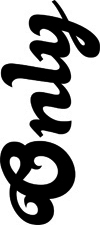only magazine
↵ home
4 out of 5000

By Asher Penn
Sunday October 1, 2006
Staff picks from Kiosk
Currently on display at the Charles H. Scott is a collection of over 5,000 artist books, magazines, records, and DVDs entitled Kiosk: Modes of Multiplicity. A traveling archive of independent publications created and compiled by the German curator Christopher Keller, this ever-expanding library has been touring Europe since 1999, and is now being shown in North America for the first time.
In order to get a feel for what the show has to offer without taking on the daunting task of trying to summarise its contents, we decided to talk to those most familiar with the show: the gallery monitors. Not only did they unload the entire show one early morning with blazing hangovers, they’ve also spent countless hours perusing the unfathomably gigantic collection. We asked them to tell us about their favourites.
Terry-Ray Brown
The publication I feel most familiar with is a collection of music videos by the director Graw Bockler, which has, since the opening of the exhibition, been more or less continuously playing on the DVD player. I’ve watched it all the way through a few times and have really enjoyed it. Plus, it makes for good background music while working. The DVD is a collection of ten or so music videos or music video-like projects. For instance, one is a collection of interviews with women who are traveling around the world set to music, which asks “why am I away from you when all I want is to be with you?” Another is a proposal by a young woman to have an empty lot in an urban area turned into a public pool instead of an office building. Another, which I really like, is about a woman who lives on the Amazon River and works hard all the time. Then she takes a vacation to the coast. It’s amazing.
Laura Piasta
Quetzalcoatl Come Through (by Sebastian Hammwohner, Dani Jakob and Gabriel Vormstein) is bound with a hard grey cloth cover complete with a dust jacket depicting a black-and-white photograph of three figures walking through the woods. All of the text in this book is in German with the exception of a drawing depicting three sticks and what appears to be a Vision Street Wear flag, and an image of a model with a sketchy scribble across her reading “Never trust art.” The images in this book are all black-and-white and appear to be photocopies from the source material, photographs and drawings of neo-psychedelic relics, memento moiré’s, crystals, German poetry, and documentation of abstract Joseph Beuys-esque sculptures.
Francesca Bennett
The sheer volume of volumes feels too overwhelming to be read. The multi-coloured Salon Verlag fit neatly in my hand; I barely care about their mostly German texts and tiny photographs. THIS IS WHAT IT IS LIKE TO BE LIKE THIS, an Art Metropole edition disguised by an almost pale green dust jacket, hides leafy duotone landscapes and single lithe phrases: “white racemes,” printed in capitals near the top of the page, reminds me that I don’t know everything. “A mortarless stone wall,” reassures me that sometimes what’s missing isn’t missed. Thus, my excuse for being seduced by the physicality of these books: as someone famous has already noted, it is not necessarily important to read books to enjoy them.
Nicholas Matranga
Palm Desert is a hardbound book of photographs by Rudy Vanderlans. Inspired By the legendary musician Van Dyke Parks’ song “Palm Desert” from his album
Song Cycle (1968), the book chronicles Vanderlans nostalgic escapade through Southern California. The lyrics of the “Palm Desert” accompany the Vanderlans photos; a move that seems sincere. Perhaps it is my affinity to southern California that I like this book, or maybe it could be any location and musician.
